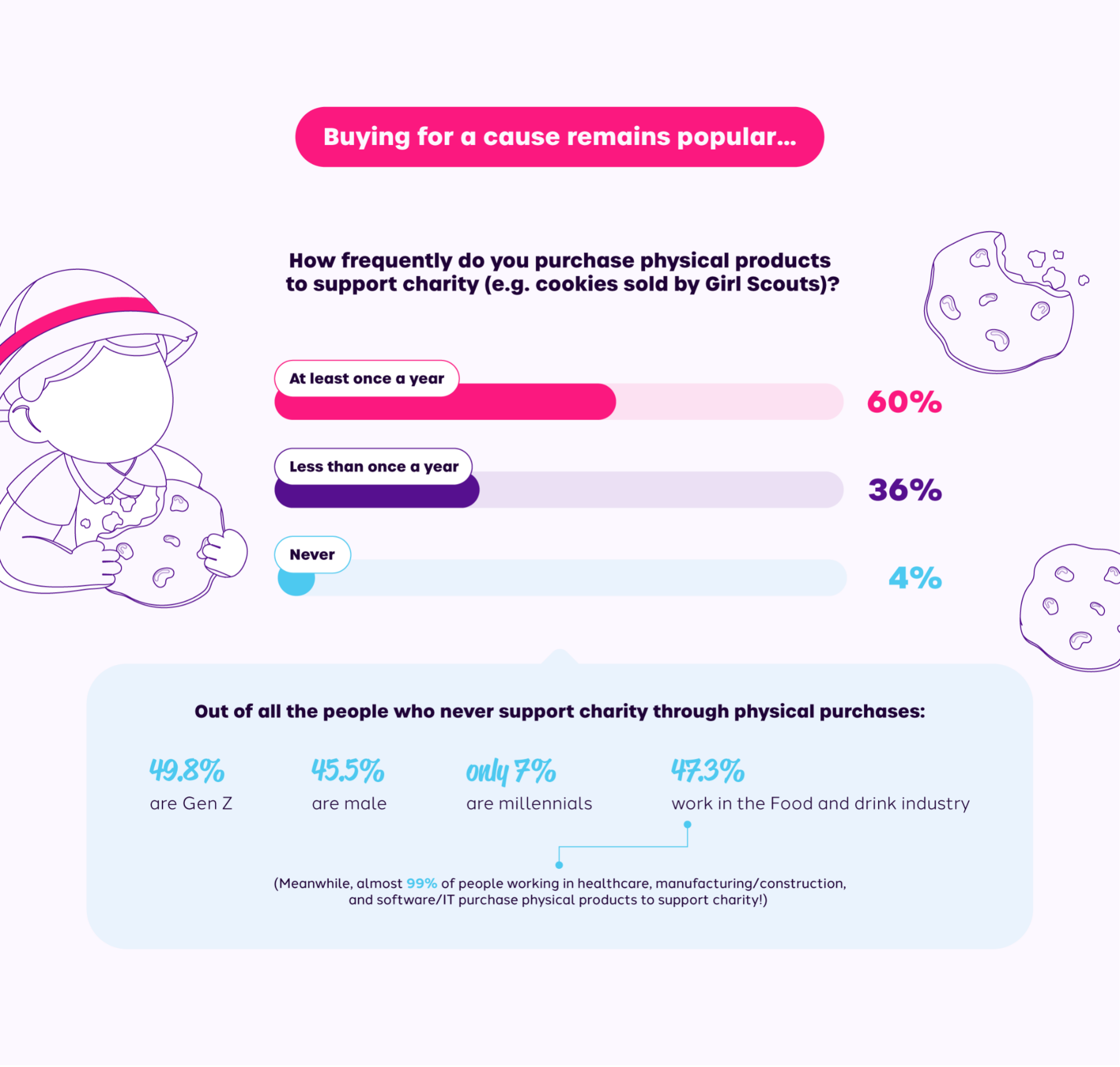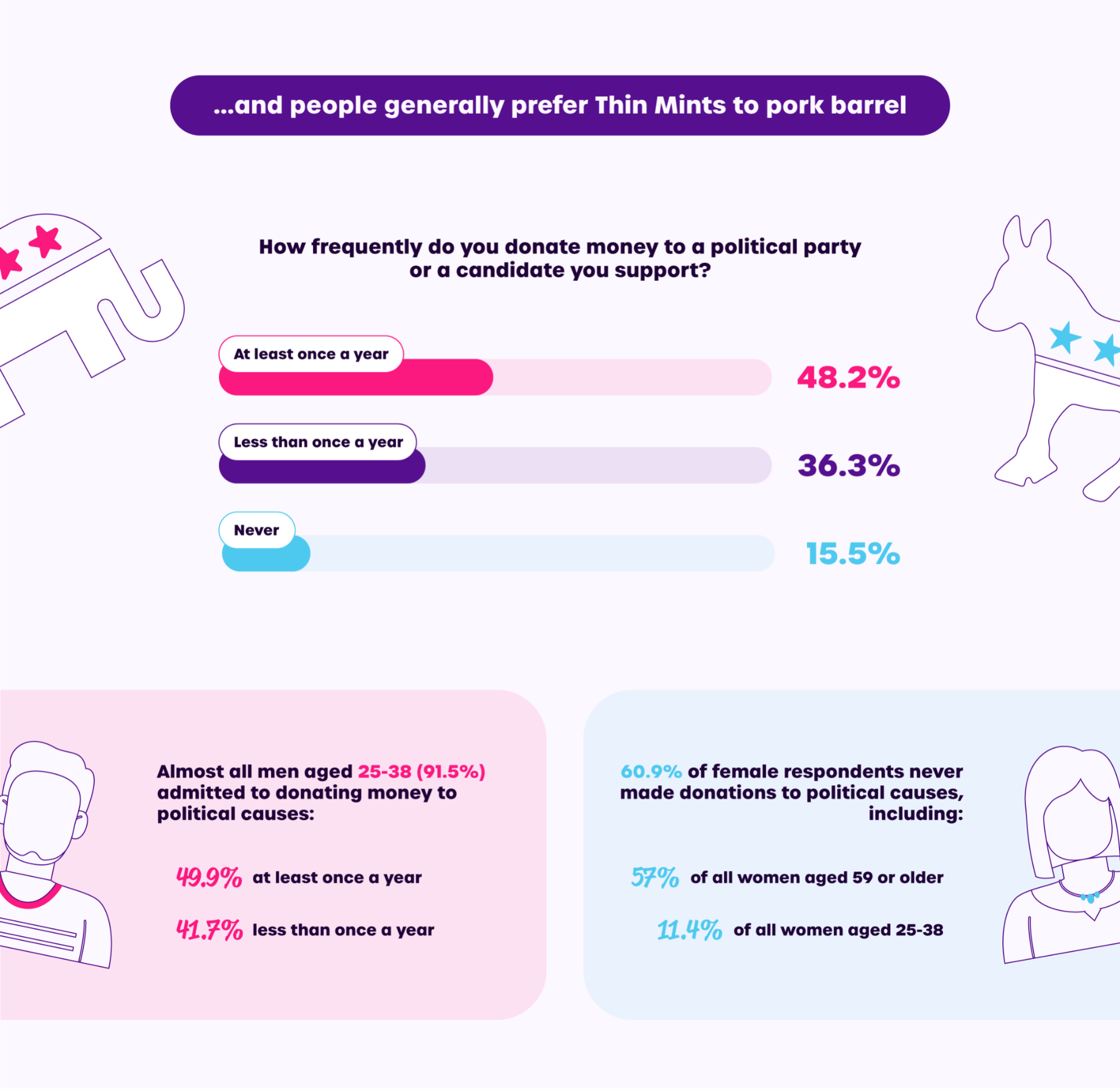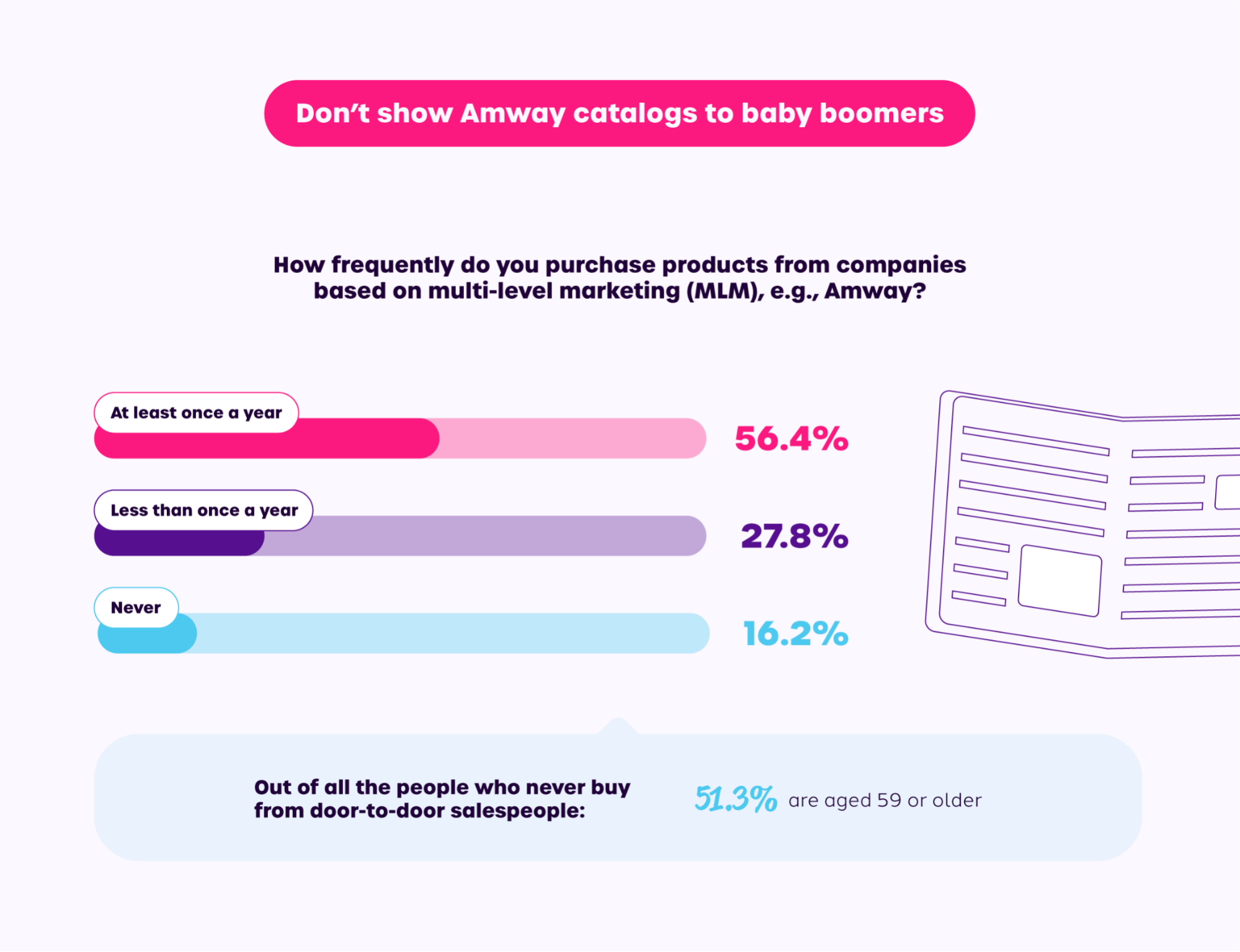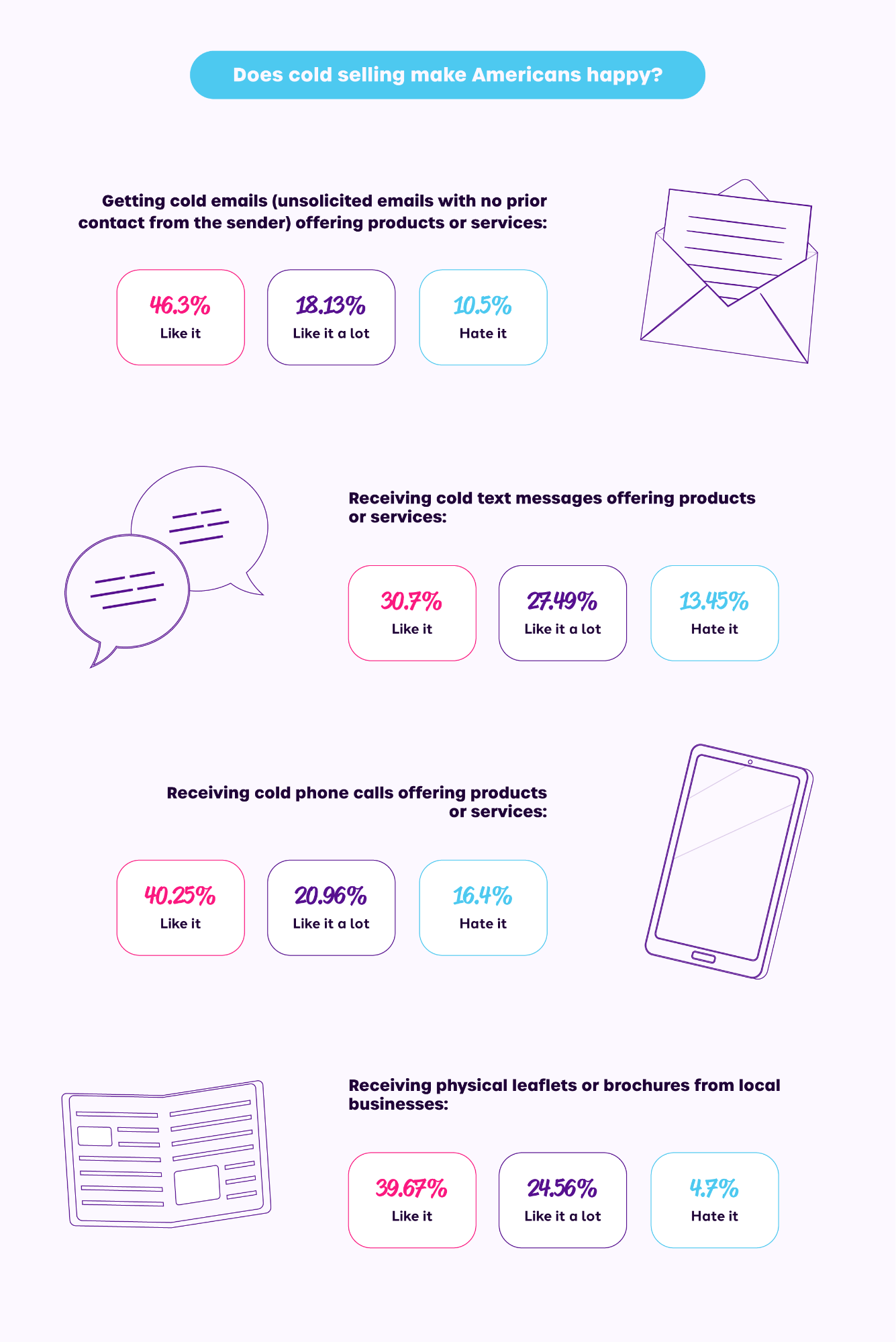So, by now we’ve got a pretty good insight into Americans’ attitudes towards direct selling. But, how self-aware are they?
First up, we asked if they thought older people were more likely to buy products from cold calling. Almost half of all respondents (47.17%) agreed with the statement, with a further 22.12% strongly believing it to be true.
As we analyzed the answers between different demographics, we discovered that most people who strongly disagreed with the statement were baby boomers themselves (54.1%). The younger our respondents got, the more they believed the original statement to be true, with 31.5% of Gen Z choosing “Strongly agree”.
That was one of our most surprising findings. As it turns out, older people hate direct sales more than younger generations so the stereotype doesn’t really hold true!
Next up, we wanted to check if Americans were likely to buy from a door-to-door salesperson if they liked the product they were offering.
We’ve already learned our respondents pay more attention to the attractiveness of said salesperson over whatever product they offer. That said, does a good product still matter?
Apparently, it does. At least that’s what our respondents claimed.
A staggering 63.84% of Americans say an attractive product offer is more likely to get them to part with their money (32.65%—agree, 31.19%—strongly agree).
This sentiment was generally more expressed by females:
- 33.72% of females vs. 31.86% of males agreed with the statement.
- 35.09% of females vs. 28.31% of males strongly agreed.
But, no matter how incredible your product is, baby boomers still won’t budge. A whopping 62.3% of all baby boomers strongly disagreed with the statement.
And the group that was most set in their ways was—yes, you guessed it—female baby boomers! Nearly half of them (46.8%) wouldn’t buy from door-to-door salesmen even if they came out with an answer to all of their prayers. They might want to save their pitches for millennial women, then, as 20.8% of them said they would purchase a product they liked.
The last thing we wanted to know was—how trustworthy are salespeople in the eyes of Americans? Do they write them off as conmen before they’ve even heard their pitch? Is direct selling a losing game?
Judging by this question alone, it appears that way.
A vast majority of respondents (73.68%) perceive salespeople as tricksters or conmen.
But, seeing as more than half of Americans buy from salespeople on an annual basis, apparently, it doesn’t bother them too much.
As we looked at differences across genders and age groups, one main thing surprised us: it’s more often females that perceive salespeople as untrustworthy.
- 33.94% of females vs. 25.59% of males strongly agree that salespeople are tricksters or conmen.
- On the other hand, only 2.52% of females vs. 3.05% of males strongly disagree with this statement.
At least there’s one group that remains predictable throughout the whole study.
Surprise, surprise—
The group that remains most critical of door-to-door salespeople is baby boomers, with 30.7% strongly believing them to be untrustworthy. Younger generations are generally more trusting toward salespeople, with 38.1% of Gen Z strongly disagreeing with the original statement.
This sentiment was reflected in the open-ended question we asked in our study: “Have you ever been approached by a door-to-door salesperson? If so, how would you describe the experience?”
Many of our respondents were apprehensive about door-to-door salespeople:
“Many times and it always seems to be at the most inopportune moment. To be honest, if I'm looking to buy something, I will go buy it. I don't really appreciate people coming to my house to sell me things.”
“Yes, I was approached by someone selling books door to door. It felt like a con. I think the guy was a former inmate, or at least he seemed that way. It all felt very sketchy and made me very uncomfortable. In the end, I just wanted him off my property, and I told him I just couldn't justify buying anything he was selling due to my limited income and needs.”
“In the world today: I would be scared, worried, afraid to open my door... I would never buy from a door-to-door salesperson..”
But, there were also those who recounted their positive experiences and restored our faith in salespeople:
“Yes. A representative of Dish Network. I liked his approach, soft-spoken demeanor, his presentation, and I ended up switching to that network and am very glad I did.”
“I used to buy from a door to door Avon lady. I felt safe to ask her to come into my home.”
And—case in point—this one person:
“I had no problem. She was an attractive woman.”















